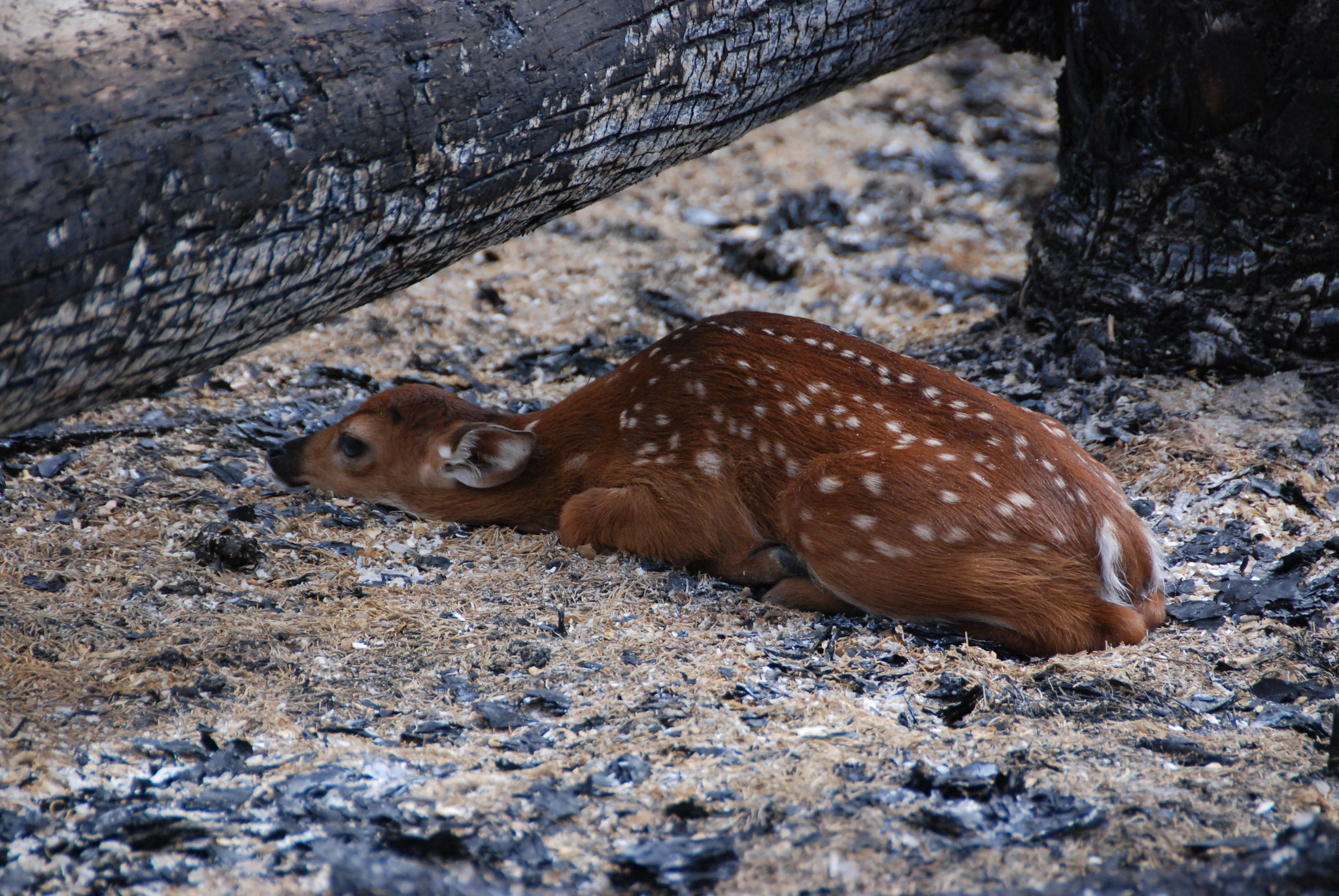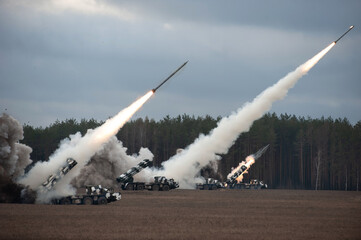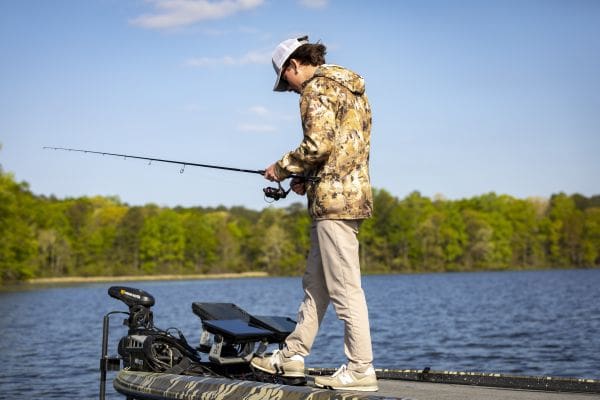It happens every year. After Lindsay Thomas Jr. burned four acres of his carefully-managed hunting property in Georgia on June 14, the criticism started rolling in.
“It’s a guarantee that someone is going to say, ‘You can’t do that, you’ll burn up fawns and turkeys,’” says Thomas of the persistent social media outcry on the topic. “I appreciate that concern, but I do feel like most of the people saying that probably have never stood next to a prescribed fire or conducted one. I think many people picture what you see on the news with a wildfire in California 20 feet high and roaring through and burning up homes. That’s the disconnect.”
The reality is that there’s minimal risk of injury or death to even the most vulnerable critters like young deer and unhatched or newly hatched turkeys. Ultimately controlled burns create a net benefit to wildlife by boosting cover and forage. Here’s what the experts recommend to ensure fires are safe in the near-term for wild critters, and beneficial for their long-term survival.
Understanding Controlled Burns
Photo by Josh O’Connor – USFWS
Prescribed burns cover much smaller areas than wildfires, and are set with a management goal in mind. When correctly set, controlled fires burn slowly, into the wind, and with low-intensity flames. All those factors make for a low-risk scenario.
“When you’re prepping an area to burn, there’s a high level of activity out there,” says Thomas. “You’re checking your fire breaks — they might need to be disked again the day before you burn, you might need to blow away leaves with a leaf blower, or check for downed limbs. I always do a walkthrough of the whole area before a burn so I can [assess the conditions before the burn]. On the morning of the fire, you’re pulling up with ATVs and tractors and friends to help. It’s not like mother doe and mother turkey are caught unawares out there by the fire.”
Thomas, who is a hunter and the director of communications for the National Deer Association, also walks the burn unit after each fire. So far, he’s never come across a dead fawn, turkey, or turkey poult (though he has found plenty of shed antlers). He also closely monitors the burn the entire time.
“When conducting a prescribed fire the way it should be done, you spend a lot of time leaning on your fire rake or your shovel, watching it creep,” says Thomas.
In fact, as he was watching a firebreak during his latest burn in mid-June, he saw movement on the ground. It took him a moment to realize what it was.
“Maybe 10 to 15 yards ahead of the fire, which is creeping slowly through the understory, I see frogs and grasshoppers and spiders pouring across that firebreak into the unburned area. So certainly there were lots of insects in that understory that didn’t get away. But I was sitting there watching a whole lot of very small creatures that travel slowly away from the fire and into the adjoining area … a fawn would have to be still slick and only hours old not to be able to outrun the fire we’re talking about. A turkey poult would have to be standing next to an eggshell to be so young that it couldn’t escape.”
Controlled Burns and Turkey Nests

Photo by Natalie K
Unlike live young, turkey nests are a major consideration for many wildlife managers who want to prescribe fire during the early portion of the growing season, such as April and May in most places. Unhatched poults certainly can’t flee a fire, and hens can’t move their clutches out of harm’s way, either.
“If you burn in April or May, you might burn a turkey nest,” says Dr. Craig Harper, a professor and Extension wildlife specialist at the University of Tennessee’s School of Natural Resources. “However, an important consideration when burning during this time of year is not burning large areas, especially on private lands that are much smaller than public lands. Wildlife scientists are still working to find the best scale of management for many species, but the best approach if you are managing private land — and wild turkey is the focal species — is to scale-down your management scale.”
Burning four 25-acre units over time is better than burning one 100-acre unit at once, points out Harper.
“Of course, public lands managers have to burn larger units. But a private land manager should scale-down their management, better intersperse the various types of cover they require, and retain more birds on their property through the year.”
Harper co-authored a study in which researchers GPS-tagged wild turkey hens to determine nest-site selection and nest survival during prescribed burns.
“Although about 20 percent of the study area was burned concurrent with nesting activity, only 3.3 percent of monitored nests were destroyed by fire,” reads the study, “and we calculated that no more than 6 percent of all turkey nests were exposed to fire annually on our study site.” In other words, those findings suggest “growing-season burns have a minimal direct effect on turkey nest survival.”
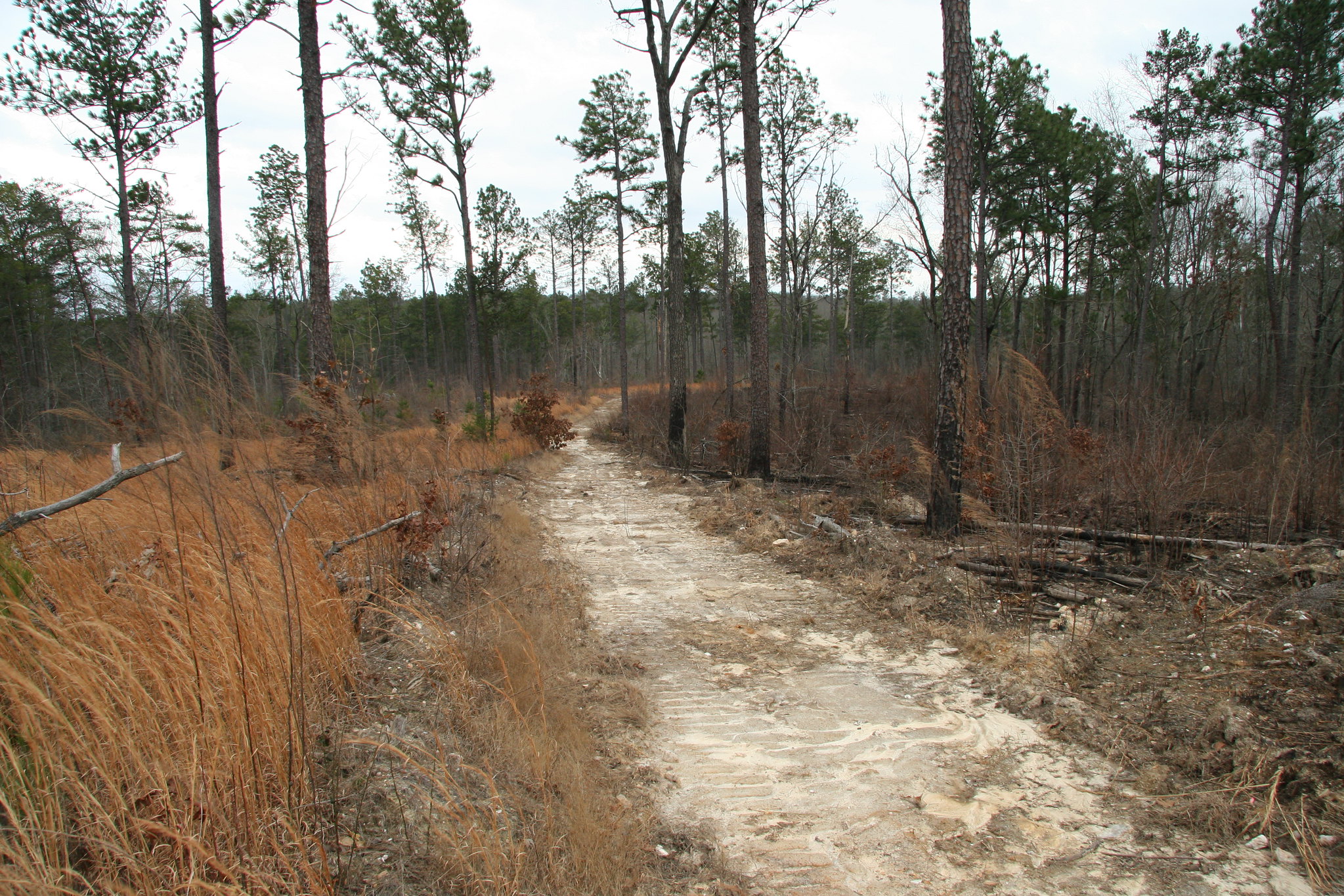
Photo by USFWS
At the 30,000-acre Jones Center at Ichauway in southwest Georgia, researchers have been carefully burning approximately 12,000 acres a year for decades. About 4,000 of those acres are burned during the growing season of April to September, with more burns increasingly occurring during this window. A 28-year case study of those fires acknowledges that yes, burning during nesting season can, but doesn’t necessarily, destroy nests of ground- and shrub-nesting birds. When nests are burned, it turns out turkeys are pretty resilient.
“We observed turkey nests that were ‘burned over’ yet ultimately hatched,” write the study’s authors. “Additionally, when turkey hens did experience nest failure due to a fire event, they generally renested.”
While there are some disadvantages associated with renesting, the overall takeaway is that prescribed fire isn’t destructive to turkeys on a population scale. In fact, just the opposite.
“Because a burned nest did not always result in a failed nest, and hens generally renested if their nest was destroyed, we concluded that prescribed fires during nesting season can be compatible with wild turkey management and the use of fire is essential in maintaining suitability of open-pine forests for wild turkeys.”
Another factor that helps keep turkey nests from getting torched is that hens don’t just nest anywhere. They prefer to nest in recently-burned areas rather than cover that was burned more than three years ago — the kind of cover that you should be identifying for burning.
“In other words, you’re burning areas they’re not choosing to nest in as much,” says Thomas. “And you’re creating areas that they do like to nest in by burning. Same for brood-rearing habitat. ”
Another study co-authored by Harper noted that vegetation structure following early-growing-season “fire was more open, which is typically selected by brooding turkeys. The taller structure following [late-growing-season] fire provided conditions typically selected for bedding or fawning by deer and nesting for turkeys.”
In other words, while you can burn during the winter, prescribed fire set throughout the growing season is important for deer and turkeys, too.
Controlled Burns and Fawns
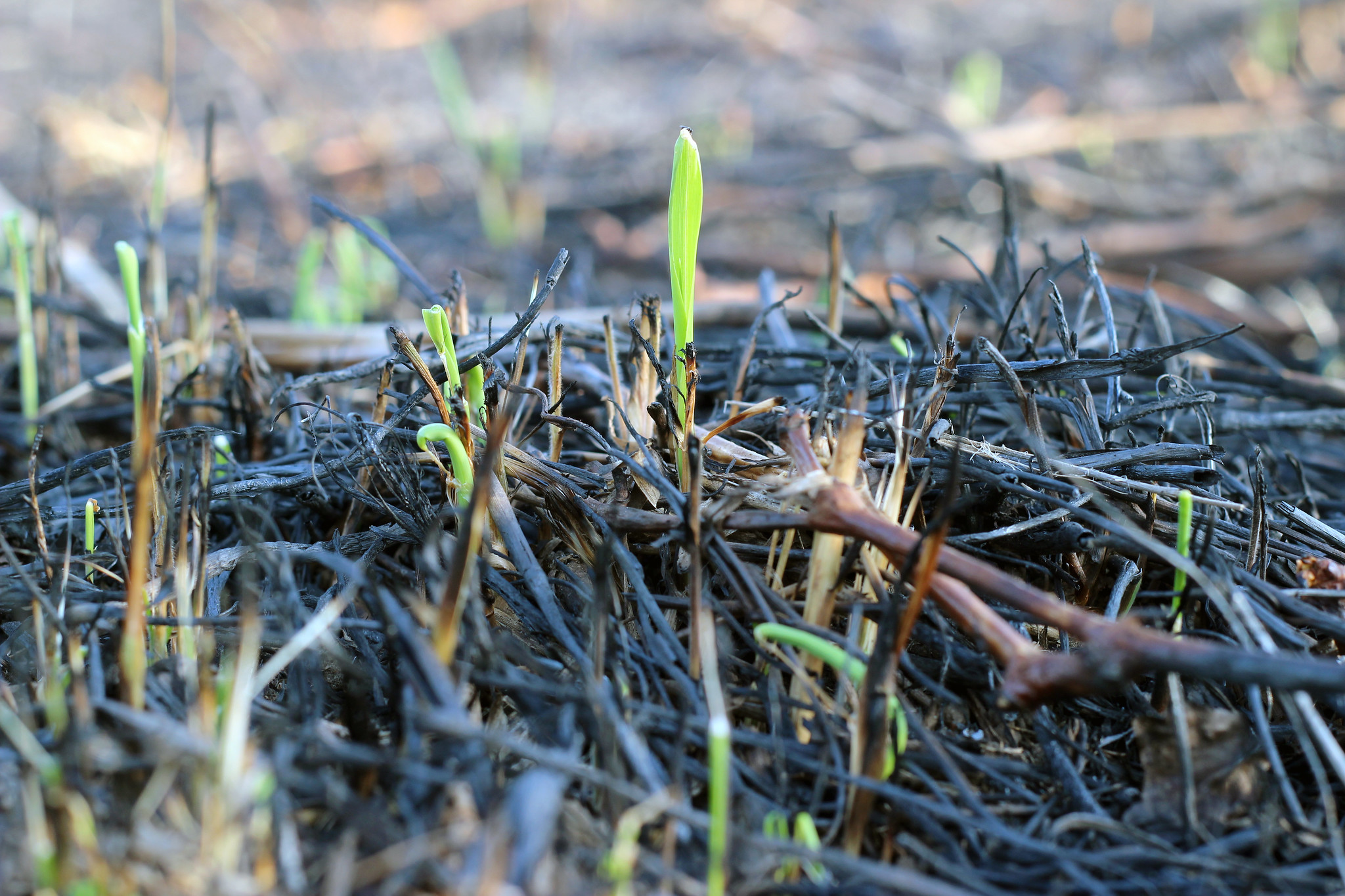
Photo by Courtney Celley / USFWS
While there’s lots of recent and emerging research on prescribed fire and turkey survival, there are fewer details on fawn survival amid fire. Fawn mortality studies show that most fawns die from predators like coyotes and natural causes, though many of those studies don’t specifically account for prescribed fire.
“There is absolutely no reason to worry about burning fawns if you burn correctly,” says Harper. “Fawns can move; nests can’t. It is possible to burn a young fawn if you use a ringing fire (light the fire all the way around an area, closing in whatever is inside). However, you should not use ringing fire — you should use backing, flanking, strip-heading, or heading fire.”
In fact, growing season burns are critical for deer health overall. Harper’s latest research on the timing of prescribed burns isn’t published yet, but it further supports key findings that growing season burns are good for deer, not harmful.
“Deer use will increase in an area two to three weeks after burning as fresh sprouts appear,” says Harper. “[That] increased use will continue for two to three months, depending on when you burned.”
It all depends on your location in the U.S., but say you burn an area in March. You can expect fresh sprouts with spring green-up. If you burn another area in April, says Harper, you will set-back what has already greened-up and you will see increased deer use in mid-summer. If you burn a different section in June, you will see increased use there soon after burning through late summer. Burn yet another area in August, you’ll get a flush of vegetation that will attract deer into the fall.
“If these burn areas are around five to 20 acres, you can see how you are essentially moving deer around as they follow the fresh growth … and getting maximum nutrition all the way through the growing season,” says Harper. “So, obviously burning through the growing season is a very good thing for anyone who is interested in deer.”
Ultimately, the net gains that fire provides for deer, turkey and other wildlife far outweigh any incidental loss, which is already unlikely.
“If you find a fawn you accidentally killed, yeah that’s not good,” says Thomas. “But is that a population level negative? No. You still have population-level benefits that far outweigh the loss of that one animal. And we’re managing populations, not individual animals. Now I don’t want to kill a fawn. But in the rare instance that should happen — and I’ve never done it that I know of — I’m still doing far more for deer than I’m taking away from them.”
We Need More Controlled Burns, Not Fewer

Photo by Natalie Kreb
Thomas did his best to point all this out to online detractors, and was unable to enlighten the staunchest holdouts.
“One of the retorts I got from a couple different people was ‘Yeah but I saw them on the WMA down the road burning a thousand acres in summer,’” says Thomas, who can’t speak to specific facts of each burn or whether the impression of “a thousand” acres is exaggerated. “Would I be concerned about a thousand-acre fire on public land in summer that was intentional and managed by an agency? No, probably not. We’ve got a much bigger problem with lack of fire and lack of disturbance on public land than we do with [burning too much public ground] … If we find a public wildlife agency, federal or state, using fire on public land we all ought to jump up and cheer because that’s one of the biggest reasons wildlife is declining on public land: lack of disturbance, like a lack of timber management and a lack of fire.”
One 2005 report estimated that the federal agencies in the U.S. conducted between 4,000 and 5,000 prescribed fires annually — that number has likely changed in the nearly 20 years since the report was published, especially since agencies are recognizing the importance of prescribed fires to help prevent wildfires.
Meanwhile, it’s true that large-scale wildfires certainly kill wildlife large and small, but even then studies show a relatively small proportion of animals die in fires (about 1 to 9 percent) and that high intensity fires are usually to blame. And even then, the population-level benefits to wildlife are clear. In Utah, for example, the long term effects of a wildfire were a net-positive for mule deer. In 2003 the Bulldog fire in southeast Utah burned more than 30,000 acres of critical summer and transitional mule deer range. After the fire, fawn recruitment jumped from a five-year average of 44 fawns per 100 does to 80 fawns per does, thanks to all the additional cover and forage that emerged in the fire’s wake.
Read Next: Can Ticks Kill Fawns?
“The important thing here is to burn. Fire is natural and it belongs here [on the landscape]. We’re the ones who took it away. We need to get it back,” says Thomas. “It’s something we should learn to do, and do safely, to enhance habitat. If you’re concerned at all about growing season fire harming fawns and poults, then just burn in winter. But the bottom line is, in most cases, there’s no evidence for a serious concern during the growing season as long as you’re burning as you should with good fire breaks, good preparation, relatively small units, low intensity fire, and burning into the wind.”
Read the full article here

